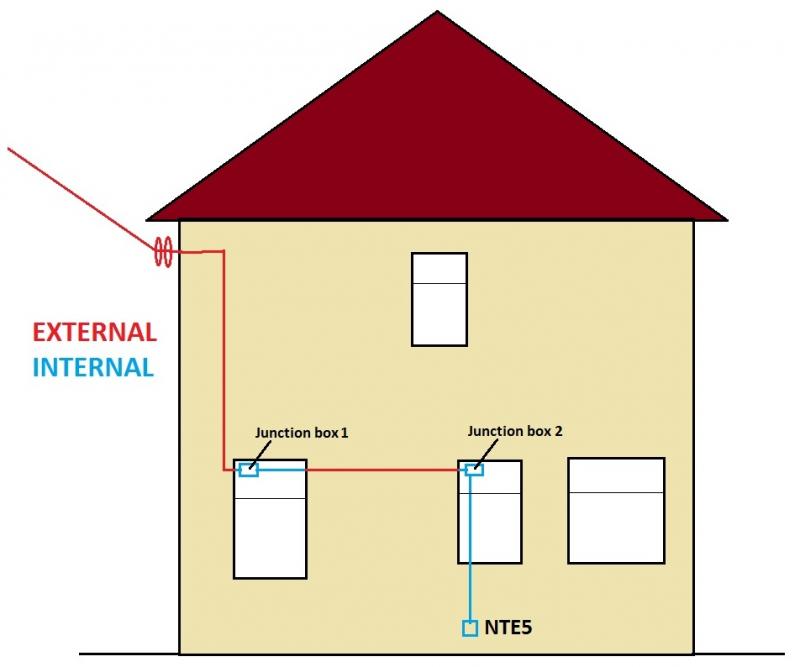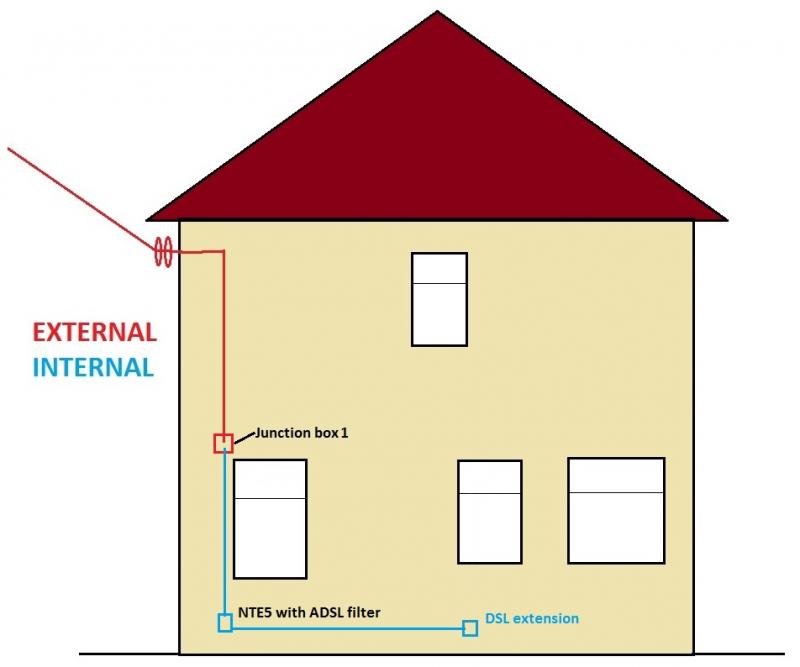Quick question... trying to tidy things up during renovations. Can I replace junction box 1 (shown in the image below) with jelly crimps (internally)?
It is currently rather unsightly with the black BT cable entering the window on one side of our hall window, through an internal junction box and exiting the window on the other side. Plan is to bury the cable in the plasterboard, but the junction box is too big.
If this is not a recommended course of action, does anyone have any alternative solutions? It would be much appreciated.
It is currently rather unsightly with the black BT cable entering the window on one side of our hall window, through an internal junction box and exiting the window on the other side. Plan is to bury the cable in the plasterboard, but the junction box is too big.
If this is not a recommended course of action, does anyone have any alternative solutions? It would be much appreciated.




